- Solan Sync
- Posts
- Top 5 Multi-Agent AI Open-Source Projects in 2025 — Build Smarter Applications
Top 5 Multi-Agent AI Open-Source Projects in 2025 — Build Smarter Applications
Discover the top 5 open-source multi-agent AI projects of 2025, including Dify, MetaGPT, and Langflow. Learn how these tools are revolutionizing AI development.
Learn AI in 5 minutes a day
What’s the secret to staying ahead of the curve in the world of AI? Information. Luckily, you can join 1,000,000+ early adopters reading The Rundown AI — the free newsletter that makes you smarter on AI with just a 5-minute read per day.
Among the most exciting developments is the emergence of multi-agent systems, where multiple AI agents collaborate to achieve complex tasks autonomously.
Whether you’re a developer looking to build intelligent applications or a tech enthusiast interested in the latest advancements, here are five of the most popular open-source agent-based AI projects (ranked by GitHub stars as of 2025) that are leading the charge.
1. 🎭 Dify (langgenius/dify): The Intuitive LLM Application Development Platform
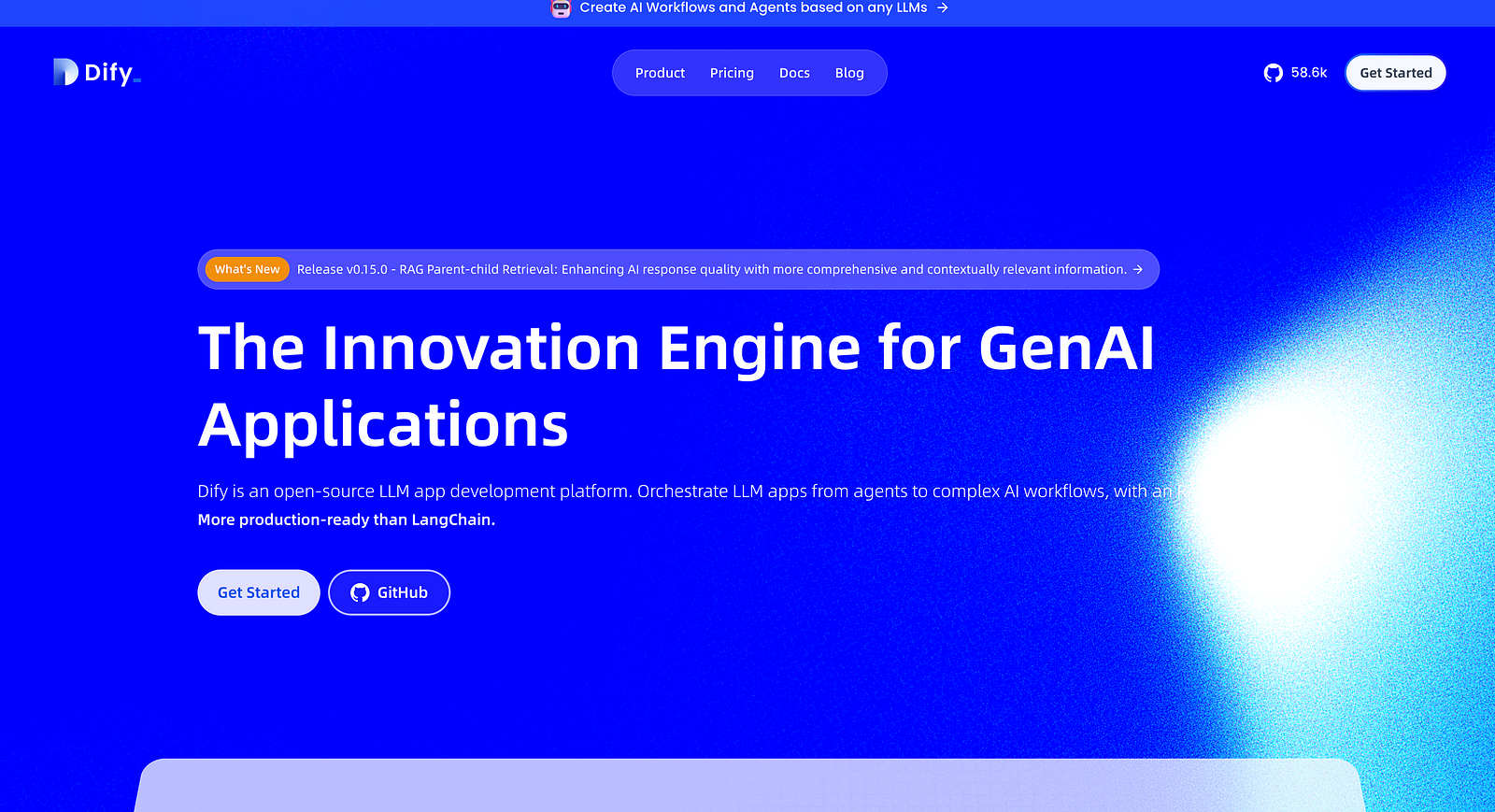
Dify stands out as a powerful open-source platform for developing applications based on large language models (LLMs). With an intuitive interface and robust features, it streamlines the development process by combining AI workflows, RAG (Retrieval-Augmented Generation) pipelines, and agent functionalities. This flexibility allows developers to create AI-driven solutions rapidly.
Key Features of Dify
🔌 Seamless integration and customization: Dify supports quick integration with various APIs and databases, making it easy to customize according to specific project requirements.
📚 RAG and agent operations: Built-in support for RAG processes ensures that developers can enhance model output accuracy by integrating external knowledge bases.
🛠️ Scalability: Dify’s architecture ensures that it can handle applications ranging from small-scale prototypes to enterprise-level solutions.
2. 🤖 MetaGPT (geekan/MetaGPT): A Collaborative Multi-Agent Framework
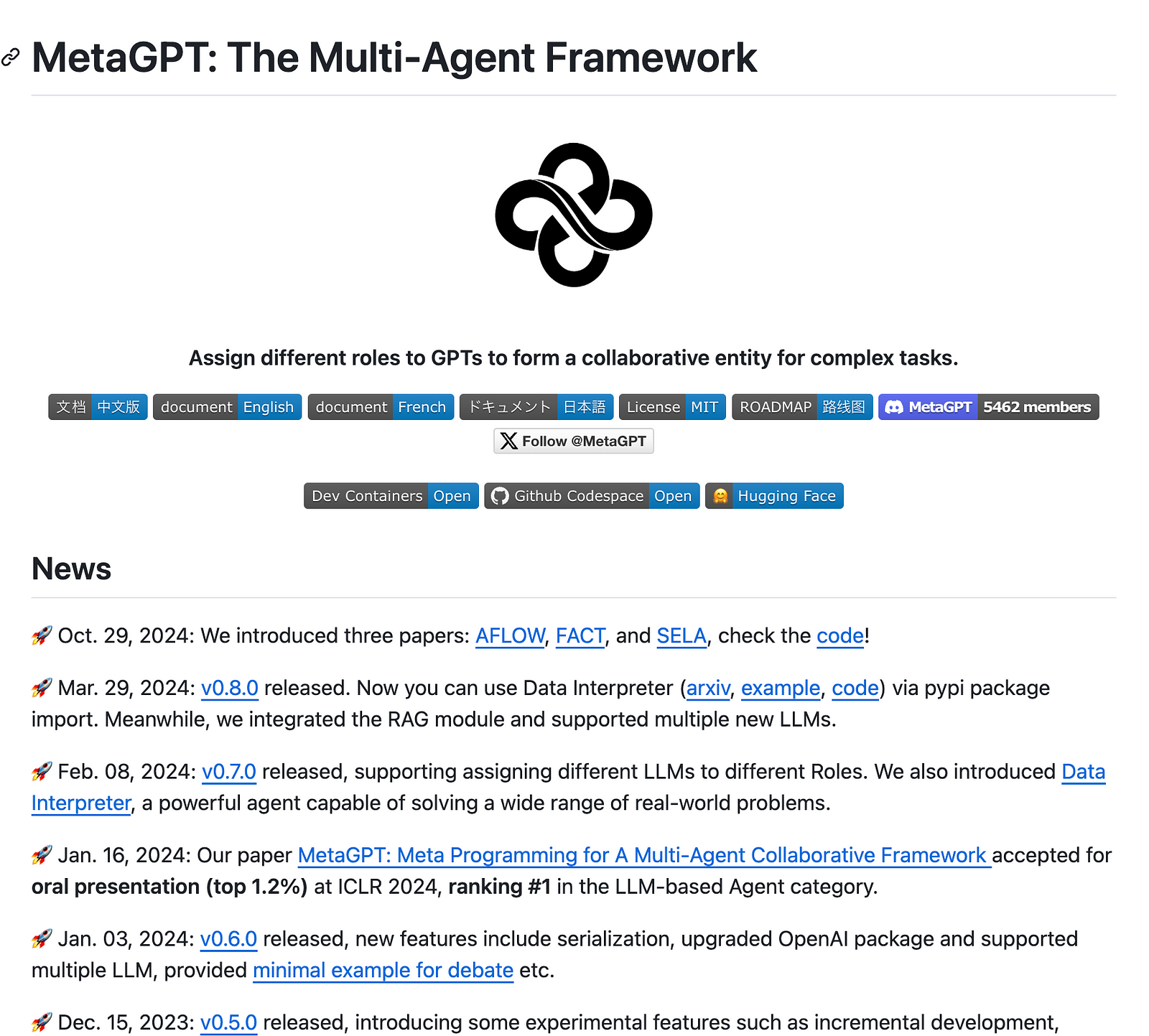
MetaGPT offers a novel approach to AI application development by emphasizing collaboration between multiple intelligent agents. Its unique multi-agent architecture supports the division of labor among agents, simulating real-world teamwork to complete complex tasks more efficiently.
Key Features of MetaGPT
👥 Multi-agent collaboration: Agents can divide tasks and work together in a coordinated manner, improving both efficiency and task complexity management.
🗣️ Natural language programming: MetaGPT allows developers to program in natural language, making the framework accessible even to those with minimal coding expertise.
💼 Business-oriented design: MetaGPT is particularly well-suited for AI-driven startups and software development companies, offering pre-built modules and tools for rapid deployment.
3. 🌊 Langflow (langflow-ai/langflow): Low-Code RAG and Multi-Agent AI Application Builder
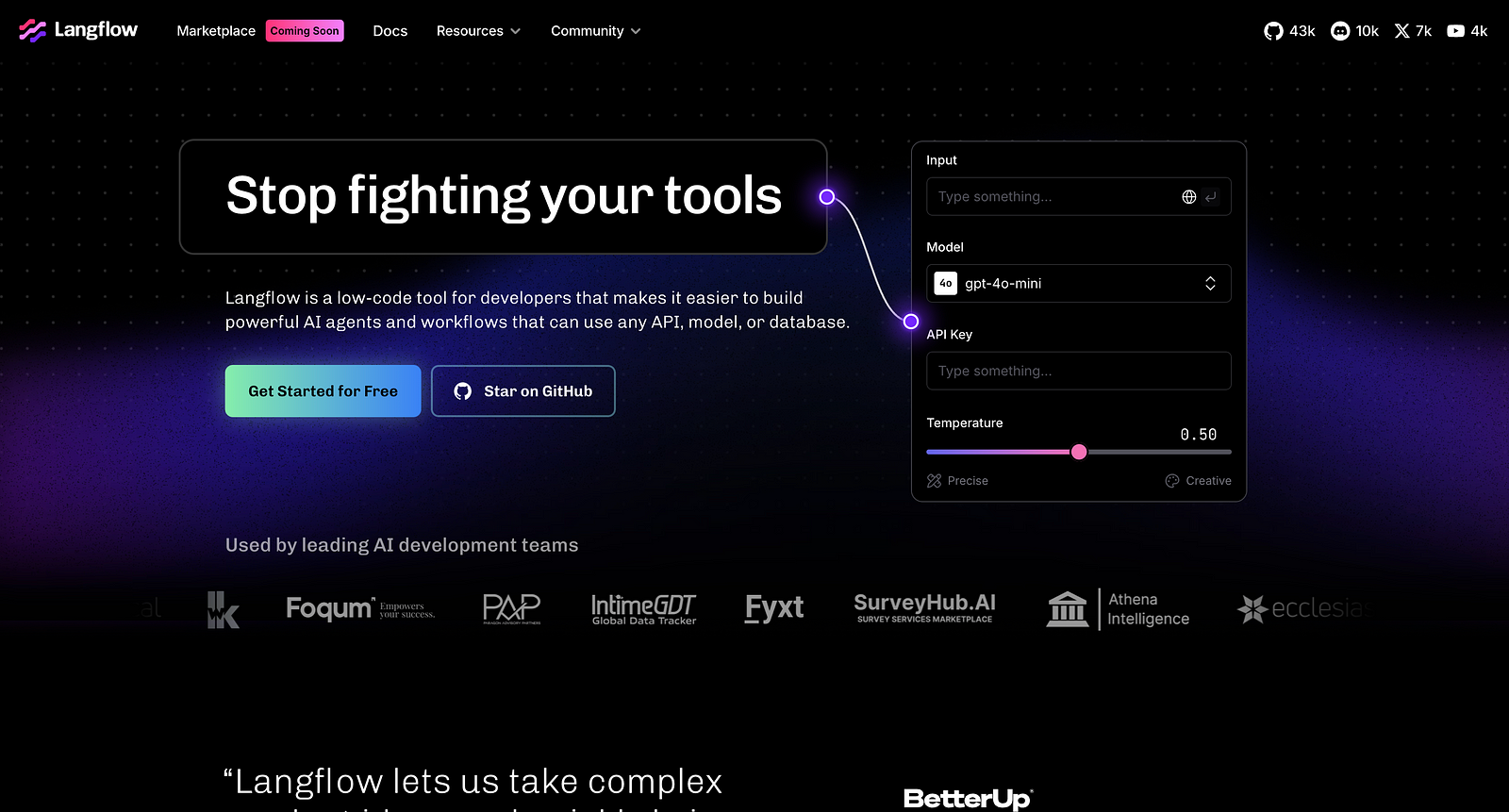
Langflow is a low-code development tool designed to simplify the creation of RAG and multi-agent AI applications. With its Python-based architecture and broad compatibility, Langflow enables developers to integrate any model, API, or database, ensuring maximum flexibility in application design.
Key Features of Langflow
🧠 RAG and multi-agent support: Built with advanced capabilities for both retrieval-augmented generation and multi-agent AI processes.
💻 Low-code environment: Langflow’s drag-and-drop interface and low-code design empower developers to create AI applications quickly, even without extensive programming knowledge.
🔗 Model and database agnostic: Developers can connect Langflow to virtually any model or database, making it a highly adaptable solution for diverse use cases.
4. 🙌 OpenHands (All-Hands-AI/OpenHands): Simplifying AI Application Creation
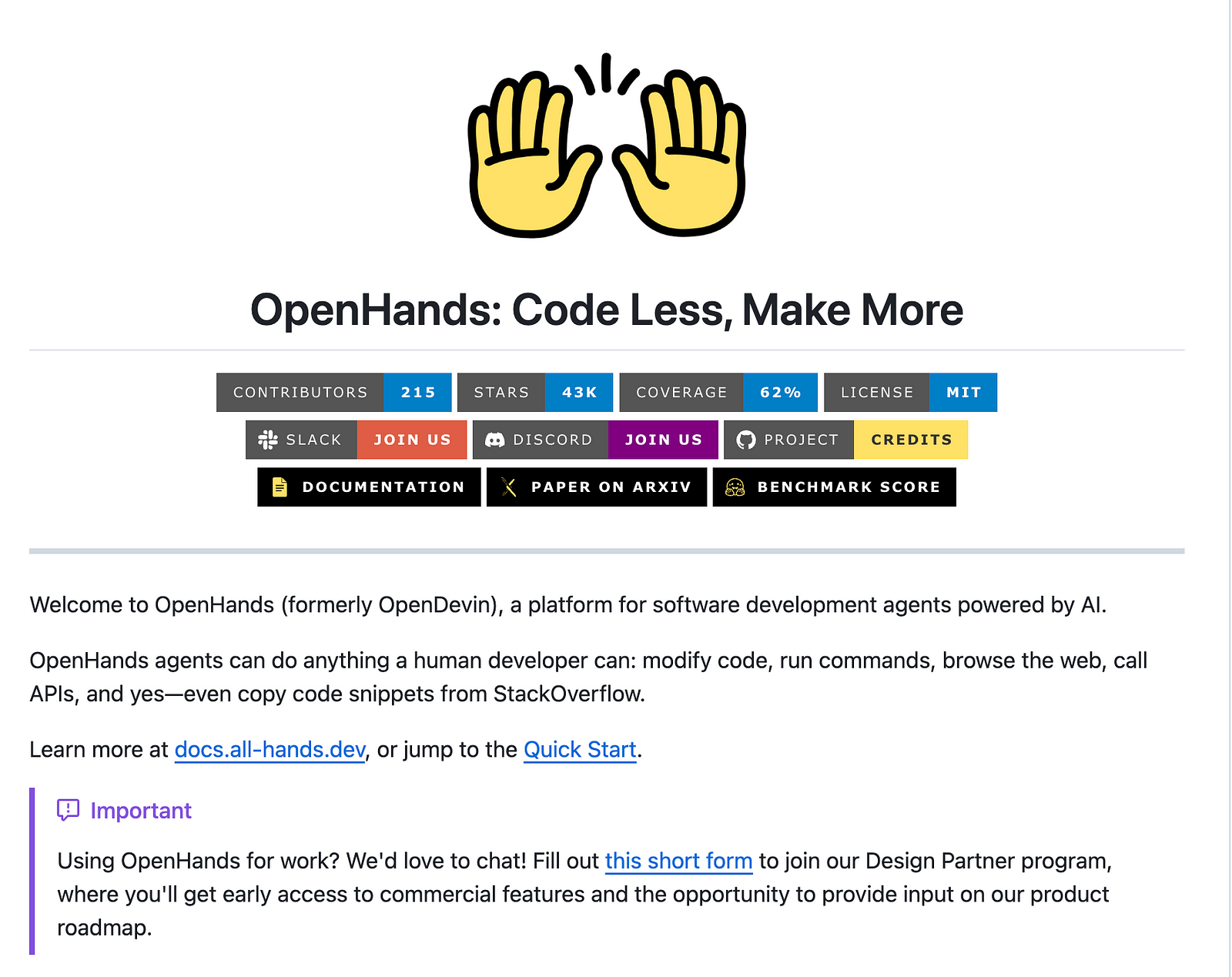
OpenHands is an open-source platform dedicated to minimizing the coding effort required to build AI applications. By offering a highly simplified development environment, OpenHands makes it possible for developers to focus more on innovation and less on boilerplate code.
Key Features of OpenHands
📝 “Less code, more done” philosophy: OpenHands drastically reduces the amount of code needed, enabling faster development cycles.
🖥️ Simplified interface: A clean and intuitive user interface ensures that even developers new to AI can start building applications with ease.
🚀 Rapid deployment: Whether you’re prototyping a new idea or launching a production-ready solution, OpenHands provides the tools to deploy applications quickly.
5. 🎓 Autogen (microsoft/autogen): Microsoft’s Agent AI Development Framework
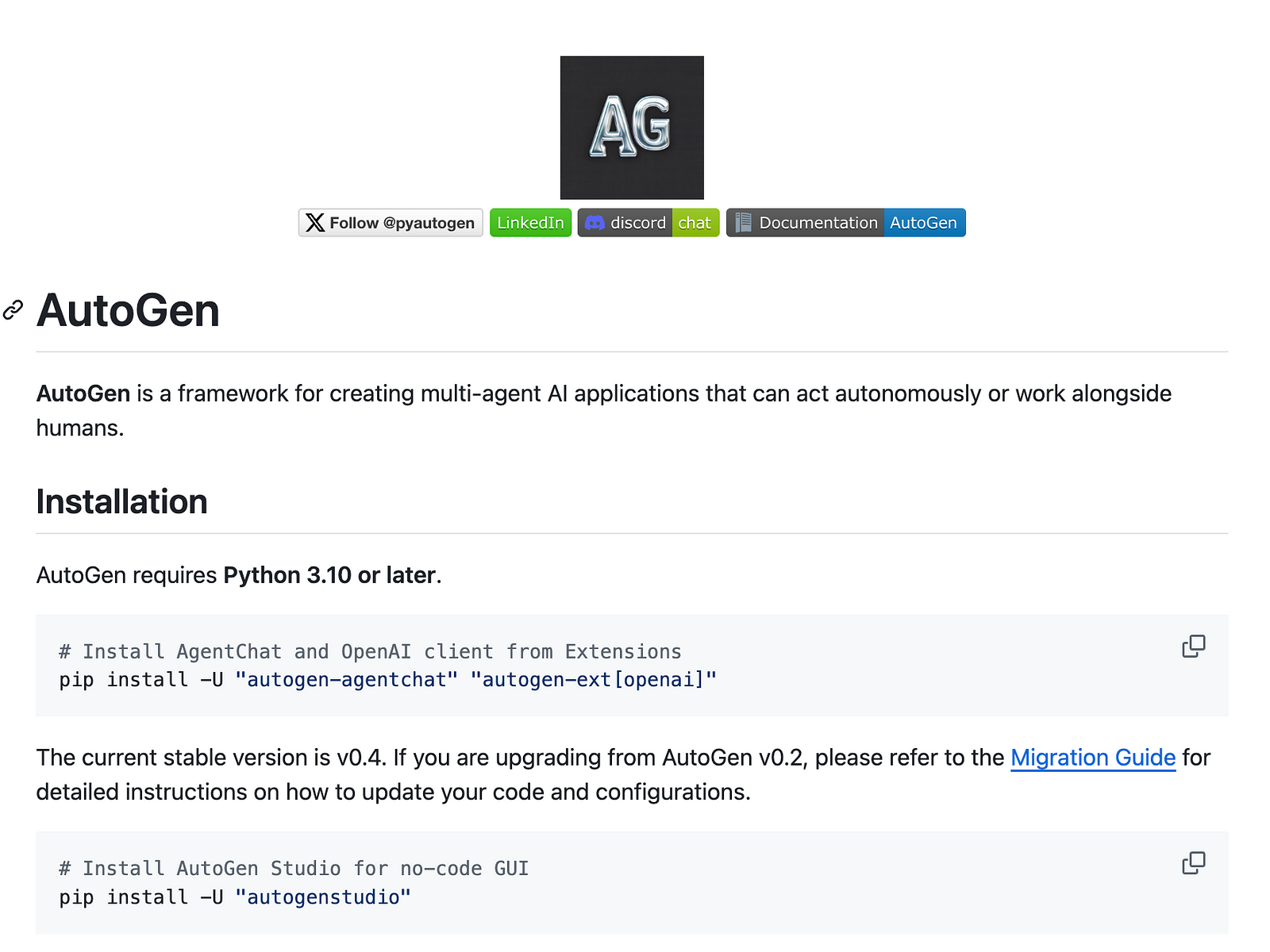
Microsoft’s Autogen framework is designed to support the creation of advanced multi-agent AI systems. With a focus on enabling complex interactions between agents, Autogen empowers developers to build smart, autonomous systems that can tackle real-world challenges.
Key Features of Autogen
💡 Intelligent agent interaction: Autogen supports sophisticated interactions between agents, allowing for dynamic problem-solving and task management.
🔧 Modular design: Developers can use Autogen’s modular components to create custom solutions tailored to specific industry needs.
🌐 Backed by Microsoft: With Microsoft’s resources and community support, Autogen benefits from continuous improvements and high reliability.
Conclusion: Open-Source Multi-Agent AI Projects Transforming the Future
As AI continues to advance, multi-agent systems are becoming a cornerstone of next-generation applications. The open-source projects listed above — Dify, MetaGPT, Langflow, OpenHands, and Autogen — are not only democratizing access to cutting-edge AI tools but also enabling developers to build smarter, more efficient solutions. Whether you’re interested in low-code development, natural language programming, or scalable agent frameworks, these platforms offer something for everyone.
By exploring these projects, developers can stay ahead in the rapidly evolving AI landscape and contribute to shaping the future of intelligent applications.
Reply